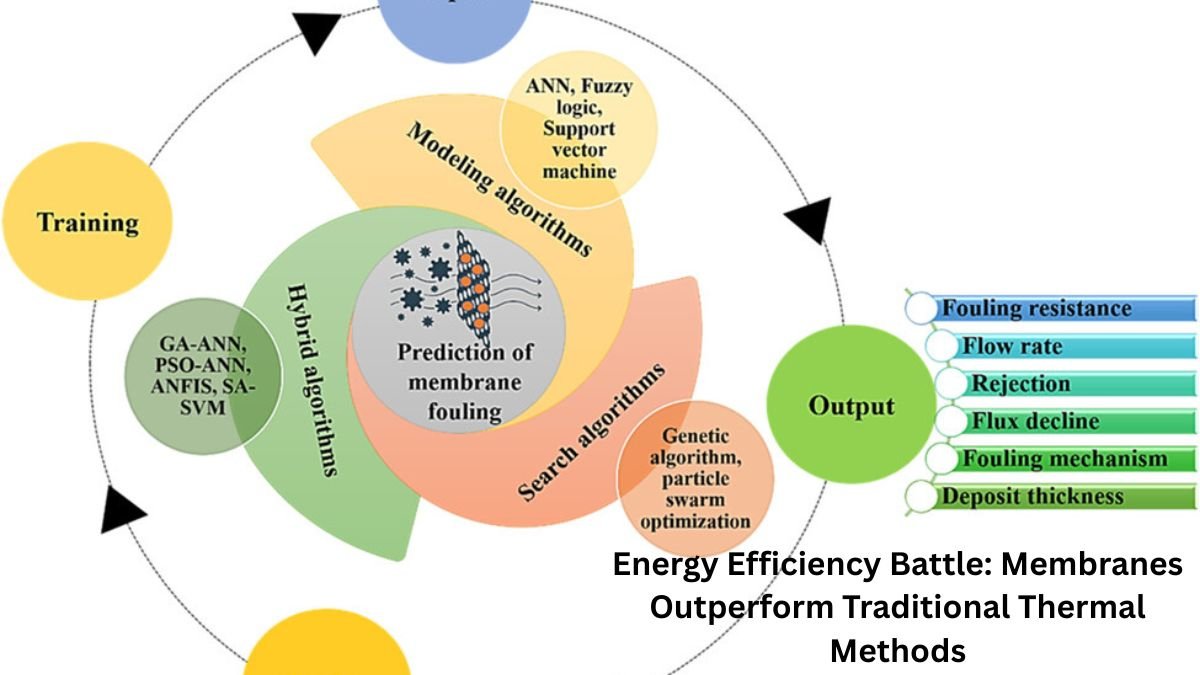In today’s world, energy efficiency has become a necessity rather than just an option. Be it the industrial sector, household electricity consumption or the challenge of global climate change – everywhere there is talk of energy savings and sustainability. In this context, there is often a comparison between two technologies – traditional thermal systems and modern membrane technology.
Thermal technology has long been the basis of industries and scientific processes, but in recent years membrane technology has made its mark in terms of energy efficiency and cost savings. In this article, we will learn in detail how membranes are leading the race of energy savings, leaving behind traditional thermal methods.
Thermal Systems vs Membrane Technology – Basic Differences
In thermal systems, heat is used to separate, purify or process a substance. For example, processes such as distillation, evaporation and drying are based on thermal technology.
On the other hand, membrane technology uses layers with micro-pores to separate a mixture. The use of heat is very low or sometimes not required at all. This is why membrane technology is considered more energy-efficient.
Energy consumption – who is ahead?
Traditional thermal methods require a huge amount of energy to heat the substance. For example, thermal distillation consumes a lot of electricity and fuel in the process of converting seawater into drinking water (desalination).
But membrane-based technology such as reverse osmosis (RO) can complete the same work with much less energy. Research shows that membranes can save up to 40% energy compared to thermal systems.
Effect on the environment
Due to high energy consumption in thermal technology, carbon emission is also high. This has a direct impact on the environment and climate change.
Due to low energy consumption in membrane technology, greenhouse gases are also released less. This is the reason why it is being seen as Green Technology.
Industrial Use
Today many big industries are adopting membrane technology:
- Water purification – Reverse Osmosis (RO) and Nanofiltration
- Pharmaceuticals – in purification of medicines
- Food industry – in removing lactose from milk and in juice processing
- Petroleum industry – in separating gas and oil
Thermal systems are still prevalent in many places, but gradually they are being replaced by membrane technology.
Cost aspect
There is a huge cost in running a thermal system right from the beginning – be it machinery, fuel or electricity. While the initial investment in membrane technology may seem a little higher, but in the long run the operational cost reduces.
Therefore membrane technology is being considered an economical option for industries.
Maintenance and convenience
Thermal machines are bigger and more complex. Their maintenance cost is also higher. On the other hand, membrane technology is compact and easy to operate.
Hence, membrane-based options like RO systems are more convenient for small industries and even homes.
Innovation and future prospects
Scientists are constantly working on improving membrane technology. With the advent of nanomaterials and smart membranes, its potential will increase further.
In the future, it is expected that membrane technology can become the biggest weapon for global water management and sustainable industrial development.
Challenges of membrane
Although membrane technology has many advantages, it also has some challenges:
- The membrane can get clogged quickly (fouling problem)
- In some circumstances, the life of the membrane is short
- High quality membranes are expensive
Scientists are working on overcoming these challenges.
Impact on everyday life
Nowadays, RO water purifiers are installed in every home. This is the biggest example of membrane technology that has directly impacted our lives.
Just imagine, if this water purification was done through thermal distillation, how much energy and cost would it have taken. This difference tells how useful membrane technology is for the common man.
Conclusion
When we compare thermal and membrane technology, it is clearly visible that:
- Membrane consumes less energy
- Is cost-effective
- Is better for the environment
And is emerging as the technology of the future
